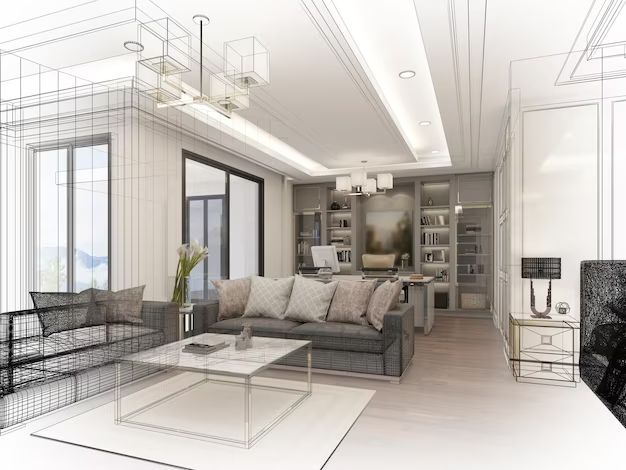Last Updated on: 21st November 2023, 09:26 pm
In the realm of construction and project delivery, there are various approaches and methods to consider. One method that has gained significant popularity and proven its effectiveness is design-build. Design-build is an integrated approach that combines the design and construction phases of a project into one cohesive process. This complete guide will delve into the concept of design-build, its advantages, implementation steps, and best practices for successful project execution.
Understanding Design-Build
Design-build is a project delivery method that brings together the design and construction teams under one entity, known as the design-builder. Unlike the traditional approach where the owner hires separate architects and contractors, design-build integrates these professionals into a unified team from the project’s inception. This collaboration streamlines communication, enhances coordination, and fosters a shared vision throughout the project.
Advantages of Design-Build
Design-build offers several advantages over other project delivery methods:
- Streamlined Communication: With design-build, the design and construction professionals work closely together from the beginning. This promotes seamless communication, reduces misinterpretations, and minimizes potential conflicts between different parties.
- Single Point of Responsibility: By having a single entity responsible for both design and construction, design-build eliminates the need for the owner to manage multiple contracts. The design-builder assumes full accountability, simplifying the decision-making process and reducing the owner’s administrative burden.
- Time and Cost Savings: Integrating the design and construction phases enables early collaboration, allowing for faster project completion and reduced timelines. The design-build approach also facilitates value engineering, ensuring cost-effective solutions without compromising quality.
- Enhanced Quality: The close collaboration between design and construction professionals in design-build results in a more integrated and cohesive project. Constructability reviews during the design phase help identify potential issues early on, leading to improved project quality.
Choosing a Design-Builder
It’s important to choose the right design builder for your project. Look for a firm with a strong list of references and a portfolio of past projects. This will give you insight into their history of scheduling and finances and how efficient and effective they are at meeting those goals.
Many owners prefer to choose a design-build team based on the designer’s qualifications, experience, technical approach, and other factors rather than price alone. This encourages a more thorough competition and a higher level of performance on all fronts. It also avoids the common pitfalls associated with awarding contracts based solely on low prices, such as favoritism and patronage that can lead to problems during construction.
It’s also important to remember that the design-build construction process doesn’t necessarily equate to lower project costs. However, it does reduce both risk and administrative burden on the owner by establishing early collaboration and streamlining communication. The resulting efficiencies can result in cost savings and shortened project schedules.
Implementing Design-Build: Steps for Success
To implement design build construction successfully, certain steps should be followed:
- Pre-Project Planning and Goal Setting: Clearly define project objectives, conduct feasibility studies, and develop a comprehensive project plan. Understanding the client’s needs, budget, and timeline is crucial during this stage.
- Selecting the Right Design-Build Team: Evaluate the qualifications and experience of design-build teams, considering their expertise, track record, and collaborative capabilities. References and client testimonials should be reviewed to assess their performance and client satisfaction.
- Establishing Effective Communication Channels: Define clear lines of communication and establish regular project meetings. Utilize collaborative project management tools and encourage open dialogue among all stakeholders.
- Setting Clear Expectations and Project Milestones: Clearly define project deliverables, establish realistic timelines, and document project scope and agreements. This ensures that all parties have a clear understanding of project milestones and expectations.
Best Practices for Design-Build Success
To maximize the benefits of design-build, the following best practices should be implemented:
- Foster Collaboration and Teamwork: Encourage early involvement and collaboration among all project stakeholders. Create a culture of open communication, shared decision-making, and a sense of ownership.
- Emphasize Effective Project Management and Coordination: Appoint a project manager to oversee and coordinate all aspects of the design-build project. Utilize project management tools to track progress, manage schedules, and ensure efficient workflow management.
- Regularly Monitor and Evaluate Project Progress: Implement performance metrics and conduct periodic project reviews to track progress, identify areas for improvement, and make data-driven decisions.
- Adapt and Make Necessary Adjustments: Embrace flexibility and be open to making changes as the project evolves. Encourage continuous improvement by seeking feedback from stakeholders and implementing lessons learned.
In conclusion, design-build is a highly effective project delivery method that offers numerous benefits. By integrating the design and construction phases, design-build streamlines communication, enhances efficiency, and delivers projects with improved quality and client satisfaction. By following the steps outlined in this complete guide and implementing best practices, project owners can maximize the advantages of design-build and achieve successful project outcomes.





